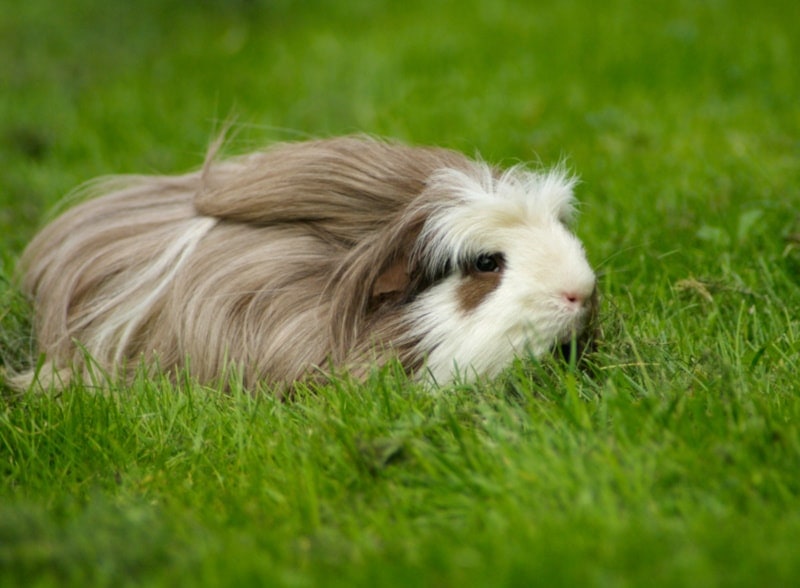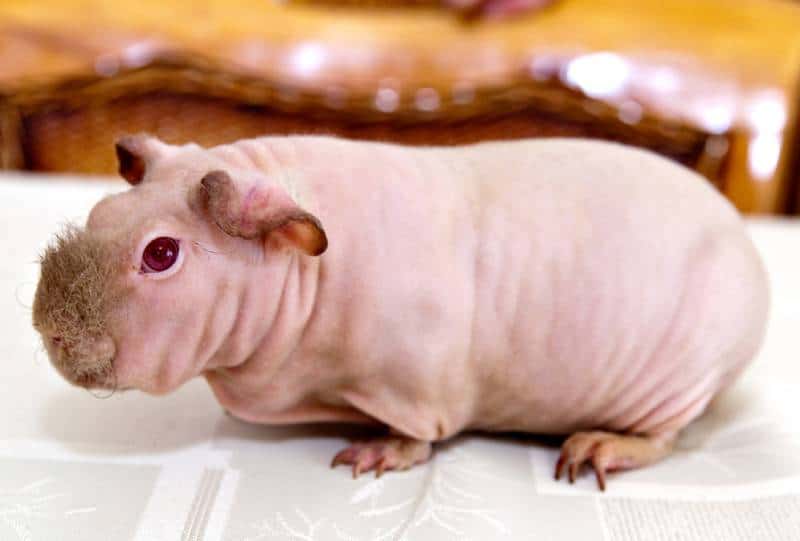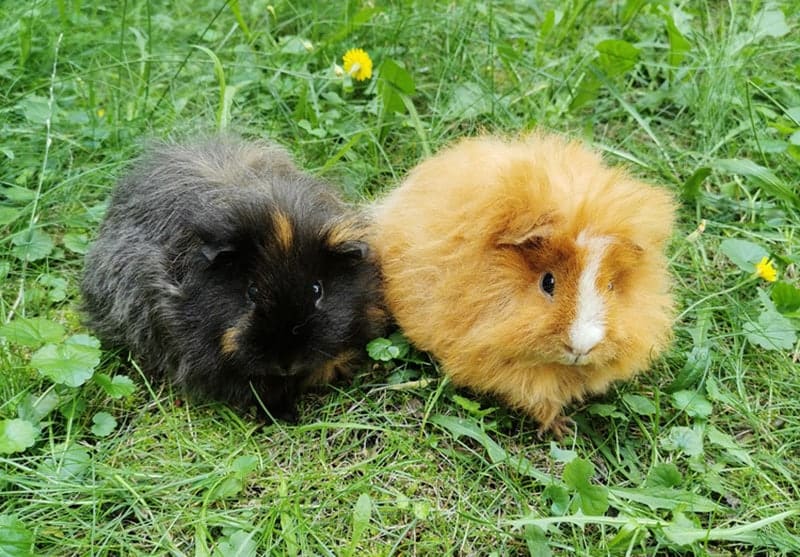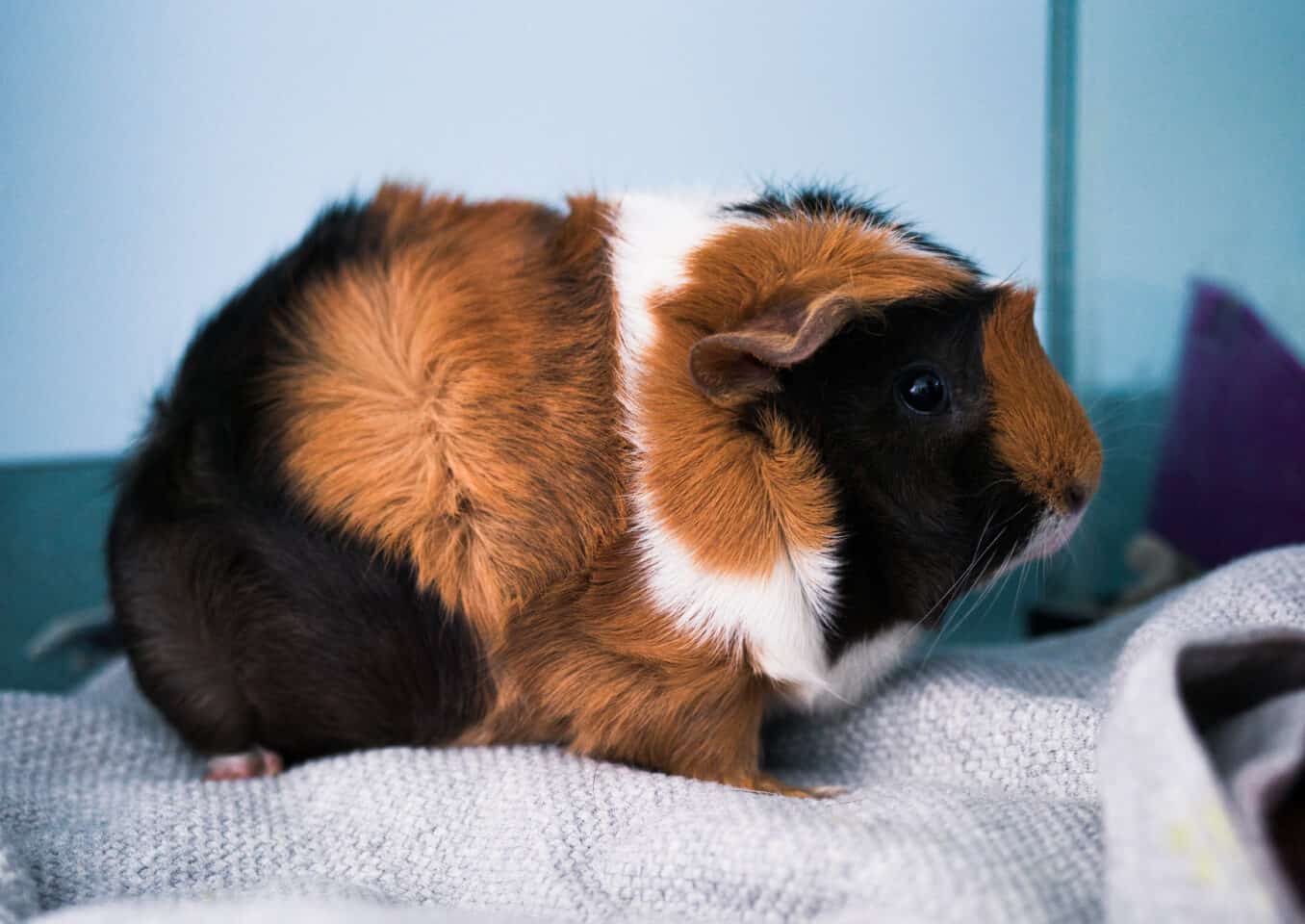Guinea Pigs may come up when your kids want a pet, and of course, you’ll want a good pet that’s good natured and easy to care for!
Still they can pose the question “What the heck are they?”
Even though guinea pigs are familiar, they’re neither pigs nor do they hail from Guinea. They are rodents originating from the Andes mountains in South America. Rodents are mammals of the order Rodentia, derived from the Latin term “rodere” which means “to gnaw.” They’re commonly called a cavy, a derivation of their scientific name Cavia porcellus.
These pets are often available in pet stores along with the well-known bunny rabbits. Rabbits, however, are small mammals of the plant-eating order Lagomorpha. Guinea Pigs are so similar to rabbits in fact, that they were nearly reclassified! But regardless of their scientific status, their role as pets in the lives of millions is beyond debate.

Guinea pigs are small, which is one reason why they are so popular as caged pets, where they reside happily. They reach no more than about 10 inches (25 cm) long and weigh no more than about 2.5 lbs (1.2kg). They live an average four to five years, but their life span can be as much as nine. Within that size and time they pack a lot of enjoyment for their human companions.
There are 13 recognized breeds in the US and several ‘unofficial ones.’ But each has unique qualities that make it a far more interesting animal than you might expect.
Some look similar to fat rats with a flat face, though not a narrowed one. Some have fancy rosettes in their coat and others look like small, rounded bunnies, but without those rabbit ears.
Many are long-haired like the Peruvian, Coronet, and Texel breeds. Others are short-haired like the more familiar American Guinea Pig.
Then for a real unusual look… there’s the “Skinny Pig” which has almost no hair at all!
But they all share the same diet, have the same propensity for developing certain diseases, and have the same undeniable cuteness.

These small pets amuse their human companions daily. Cavies have a range of behaviors that are far different from rabbits, hamsters and other small pets. Though they are rather timid, they are full of amusing habits. They chirp or whistle, bounce or hop, and exhibit a range of distinctive behaviors unlike their mammalian cousins.
Guinea Pigs can breed often year round. Though they can produce as many as six litters in a single year, this would be pushing the limit for a sow. The gestation period is about two months and the average sized litter is three young, though several more are possible. The young are immediately active soon after birth.
The young suckle like all mammals but they can eat grass right away, which is an important part of their natural diet. They’re also fond of Timothy hay and will eat some fruits and vegetables. Like rabbits, their teeth are continuously growing and they will often gnawing on anything available. They do well with chew toys designed specifically with the cavy’s teeth in mind.
Guinea Pigs tend to be quieter and more placid than other rodents, but there are dozens of toys that can help keep them from being bored. They love to snuggle in lumpy blankets or shavings. They won’t usually do much with a walking wheel and depending on the design it can also harm their feet. But there are dozens of toys that can help keep them from being bored.

A happy Guinea Pig is easy to detect. They will purr like a cat, a sound known among cavy aficionados as bubbling. If you have a chance to attend a professional cavy show, the sound can be obvious. A whole chorus of these affectionate animals may ‘sing’ in harmony!
Do you have a Guinea Pig? Would you like to share you pet story and some maybe some of their pictures? Then simply sign up on Pet Talk and join in!
Join us on Facebook too! Pets, Animals, and People: Our World United
Clarice Brough is a team member at Animal-World and has contributed many articles and write-ups.
Photos provided courtesy of Animal-World.com contributors!
Featured Image Credit: Openverse
